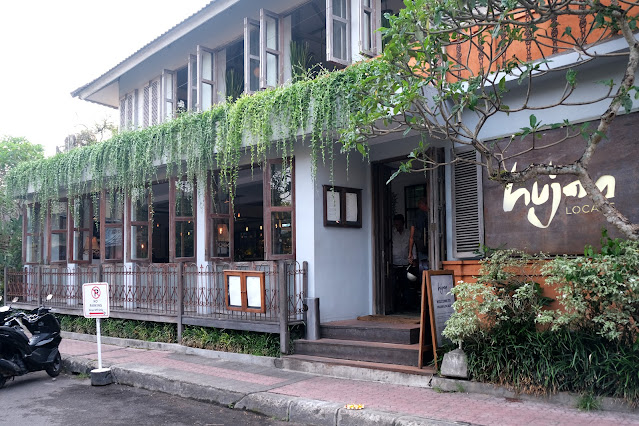Chinese New Year's Eve
Like the Christmas Dinner, the Reunion Dinner used to be held exclusively at home. But in this modern busy world, more often then not it is had at a restaurant. Bookings have to be made months in advance, as not all restaurants are open on this night.
My mum used to cook a scrumptious and lavish meal on New Year's Eve and we all look forward to it for the whole year. Nowadays she finds it too tedious and tiring to cook such a big meal, so like thousands of other families we have ours in a restaurant.
It has become a tradition to have Yee Sang - or raw fish during Chinese New Year. Fish (Yee) in Chinese sounds like "abundance", and Sang (raw) sounds like "rise". Put the two together and you have "The Rise of Abundance", which is the hope of most Chinese families for the new year.
The dish consists of strips of raw fish (can be any type - most commonly salmon nowadays), shredded vegetables like carrots and turnip, dried fruits and crunchy crackers tossed in a sweet and sour sauce. It is quite delicious and great as an appetizer.
Shark's Fin Soup is another common dish served during CNY. Nowadays it is more "soup" then "shark's fin", which is just as well as less sharks are sacrificed for this dish. There are even restaurants which add artificial shark's fin to the mix, and you would be hard-pressed to tell the difference as shark's fin by itself doesn't have much taste. I am hoping that they can perfect the artificial version so we don't need to kill the poor sharks just for the fins.
Next came the glutinous rice in lotus leaf. There were bits of Chinese sausages, dried shrimps and diced chicken in the rice, topped with deepfried shallots. Quite tasty, but very filling.
This was a pig knuckle stewed in light soy sauce, served with soft steamed buns.
Steamed white pomfret in a sweet soy sauce. As "yee" means abundance as explained earlier, to have fish every year - "nian nian yu yee", means to have an abundance year after year.
An interesting dish - stuffed sea cucumber in a winter melon "bowl", covered in a carrot netting. The minced meat stuffing was a bit too "meaty", but the winter melon was good - soaking up all the delicious taste of the sauce.
Prawns cooked in a sweet tomato sauce.
Another symbolic dish - Chinese white cabbage with dried oysters. Dried oysters - "ho si" in Chinese, sounds like "good event". So to bring lots of good things for the year you must eat lots of dried oysters. They are quite delicious, but not to everyone's taste. The oyster's taste is amplified through the dyring process.
As you can see, eating during Chinese New Year is not just for the taste. Eating the right food with the right name and meaning will bring fortune, prosperity and happiness for the new year. If only it were that easy !
May you all have a Happy, Prosperous, Peaceful and Healthy New Year !











Comments
Xin Nian Kuai Le!
Is the raw fish in Yee Sang marinated?